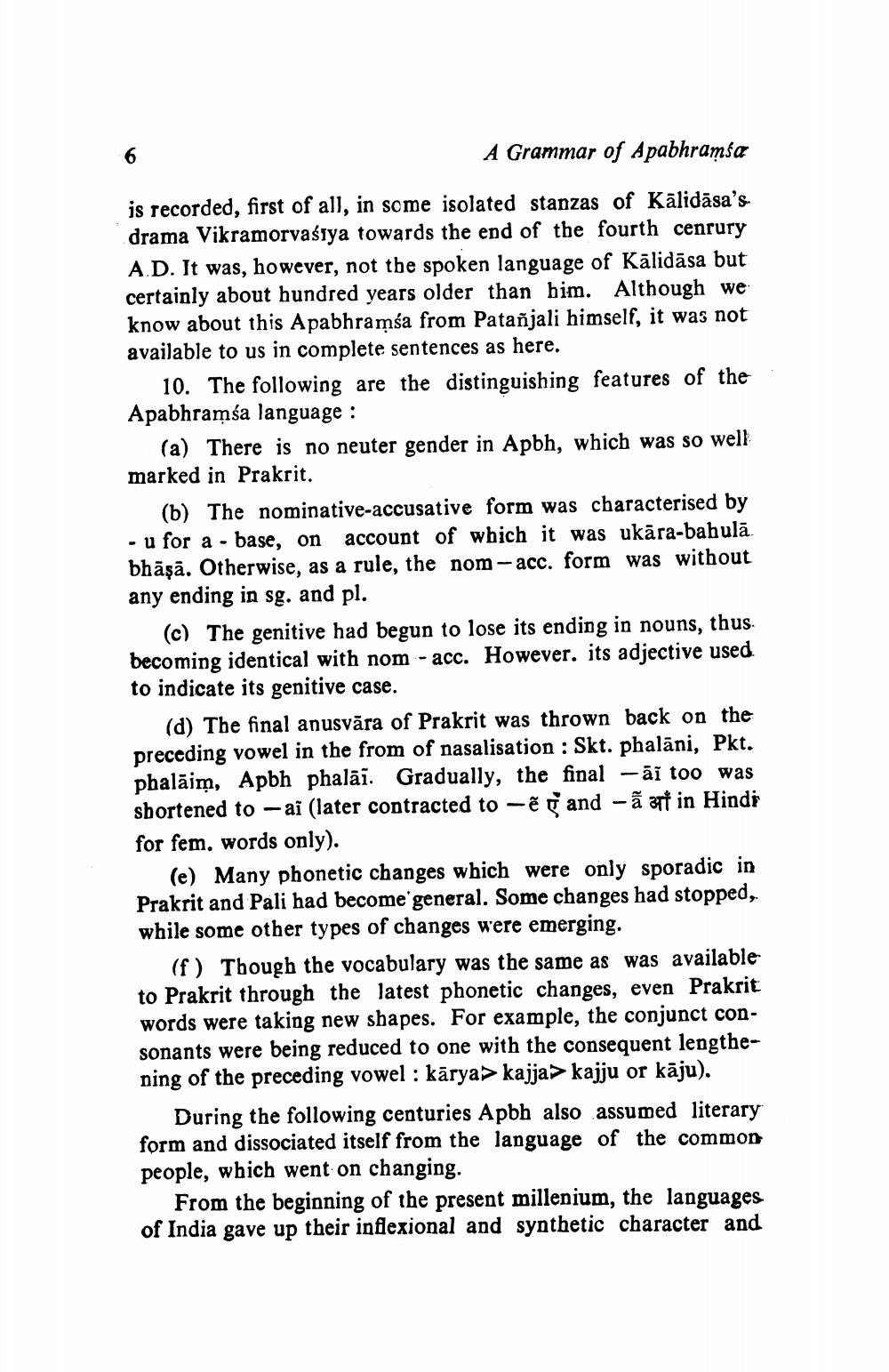________________
A Grammar of Apabhramsa
is recorded, first of all, in some isolated stanzas of Kālidāsa's drama Vikramorvasiya towards the end of the fourth cenrury A.D. It was, however, not the spoken language of Kālidāsa but certainly about hundred years older than him. Although we know about this Apabhramśa from Patañjali himself, it was not available to us in complete sentences as here.
10. The following are the distinguishing features of the Apabhramśa language :
(a) There is no neuter gender in Apbh, which was so well marked in Prakrit.
(b) The nominative-accusative form was characterised by - u for a - base, on account of which it was ukāra-bahulā. bhāṣā. Otherwise, as a rule, the nom-acc. form was without any ending in sg. and pl.
(c) The genitive had begun to lose its ending in nouns, thus. becoming identical with nom - acc. However, its adjective used to indicate its genitive case.
(d) The final anusvāra of Prakrit was thrown back on the preceding vowel in the from of nasalisation : Skt. phalani, Pkt. phalāim, Apbh phalās. Gradually, the final -ās too was shortened to - ai (later contracted to -ế grand -ã art in Hindi for fem. words only).
(e) Many phonetic changes which were only sporadic in Prakrit and Pali had become general. Some changes had stopped, while some other types of changes were emerging.
(f) Though the vocabulary was the same as was available to Prakrit through the latest phonetic changes, even Prakrit words were taking new shapes. For example, the conjunct consonants were being reduced to one with the consequent lengthening of the preceding vowel : kārya> kajja> kajju or kāju).
During the following centuries Apbh also assumed literary form and dissociated itself from the language of the common people, which went on changing.
From the beginning of the present millenium, the languages. of India gave up their inflexional and synthetic character and




